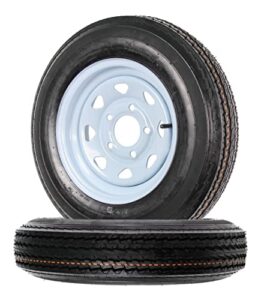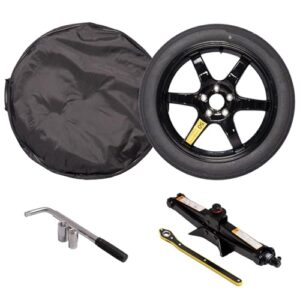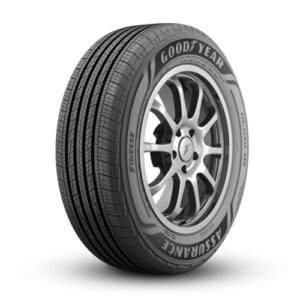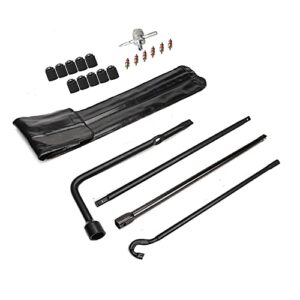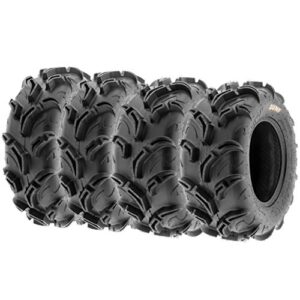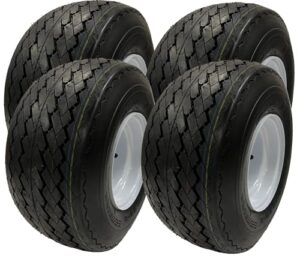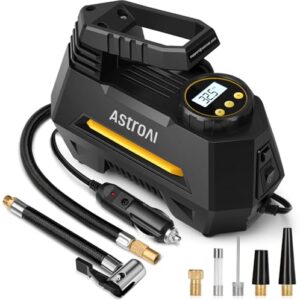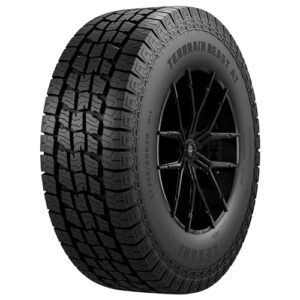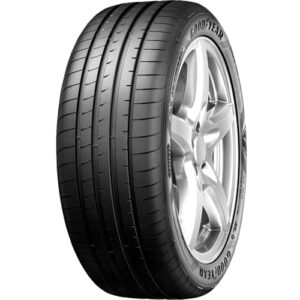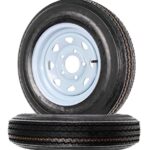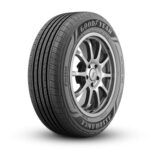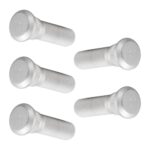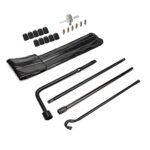The best time to take tire pressure is in the morning before driving or after the car has been parked for at least three hours. This ensures your tires are cold and the reading is accurate.
Checking tire pressure is a vital aspect of vehicle maintenance that affects safety, fuel efficiency, and the longevity of your tires. Ensuring you measure tire pressure at the optimal time can lead to more precise readings, enabling better tire performance.
As temperatures can affect tire pressure, readings taken after driving or during the heat of the day might not be reliable. A properly calibrated tire gauge is your go-to tool for this task, and consistent checks can help you detect any issues before they become hazardous. Remembering to maintain the manufacturer’s recommended tire pressure will not only keep your rides smooth but also contribute to your vehicle’s optimal handling and braking efficiency.
Introduction To Tire Pressure Importance
Maintaining proper tire pressure is vital. It ensures your car rides smoothly and saves fuel. It also helps tires last longer. But when is the best time to check your tires? Early morning or after the car has been resting can give the most accurate readings. Let’s explore the role of correct tire pressure and consequences of getting it wrong.
The Role Of Correct Tire Pressure
- Improves fuel efficiency
- Increases safety on the road
- Increases vehicle handling
- Reduces tire wear and tear
Correct tire pressure means your car uses less fuel. Your car handles better and stays safe. Your tires also wear down less. This saves you money and keeps you driving safely.
Consequences Of Improper Tire Pressure
| Low Pressure | High Pressure |
|---|---|
| Increase in fuel consumption | Less grip on roads |
| Tires wear out faster | Risk of tire blowouts |
| Poor vehicle handling | Uncomfortable ride due to stiffness |
Too low or high tire pressure creates problems. Low pressure can eat up fuel and wear out tires. High pressure can make tires pop and your ride rough. Both can make driving dangerous.

Understanding Tire Pressure Readings
Tire pressure readings are crucial for safe driving. These readings ensure tires are at the optimal inflation level. Proper inflation provides better fuel efficiency and prolongs tire life. Let’s dive into understanding how these readings work and the recommended levels for different vehicles.
How Tire Pressure Is Measured
Tire pressure is the amount of air in a vehicle’s tires. It is measured in pounds per square inch (PSI). A tire pressure gauge, either digital or analog, can measure this. Checking tire pressure occurs when tires are cold, ideally after a car has been parked for a few hours.
- Remove the cap from the tire’s valve stem.
- Press the tire gauge onto the valve stem.
- Read the PSI level on the gauge.
- Repeat for all tires, including the spare.
Recommended Pressure Levels
The manufacturer’s manual provides recommended tire pressure. This information is also on a sticker located on the driver’s side door jamb. The right pressure for your car is vehicle-specific and considers load and driving conditions.
| Vehicle Type | Front Tire PSI | Rear Tire PSI |
|---|---|---|
| Small Sedan | 32-35 | 32-35 |
| SUV | 35-40 | 35-40 |
| Truck | 35-60 | 35-60 |
Always stay within the recommended PSI range. Both underinflation and overinflation can cause issues. Remember, the right pressure maximizes safety, efficiency, and performance.
Temperature’s Impact On Tire Pressure
Tire pressure, a crucial aspect of vehicle maintenance, does not remain constant. It fluctuates with temperature changes. Understanding this relationship helps ensure tires perform optimally and last longer. Tires under or over-inflated can lead to reduced fuel efficiency, compromised handling, and premature tire wear. Checking tire pressure at the right time maximizes safety and vehicle performance.
Thermal Expansion And Contraction
Air inside tires reacts to temperature much like a balloon. Warm air expands, causing pressure to rise, while cold air contracts, resulting in lower tire pressure. This is why outside temperatures greatly influence tire pressure.
- For every 10 degrees of temperature change, tire pressure adjusts by approximately 1 PSI.
- Check tire pressure in ambient temperature for the most accurate reading.
- Avoid checking immediately after driving, as tires heat up, causing temporarily higher readings.
Seasonal Variations
Seasons bring significant temperature shifts, affecting tire pressure differently throughout the year.
| Season | Temperature Effect | Pressure Action |
|---|---|---|
| Spring/Summer | Higher temperatures increase pressure | Monitor and release excess air if needed |
| Fall/Winter | Lower temperatures decrease pressure | Add air to maintain optimal PSI |
It is best to check tire pressure early in the morning or after the car has been at rest for at least three hours. This is when tires are cool, giving the most accurate pressure readings.
Doing regular checks during seasonal transitions is key. With proper maintenance, your tires will reward you with improved safety and performance.
The Best Time Of Day For Accurate Readings
Checking tire pressure is crucial for safe driving. The right time of day can give you the most accurate readings. To ensure tire safety and performance, learn the best time for checking your tire pressure.
Morning: The Optimal Time
Early morning is the perfect moment for tire pressure checks. Tires are cold and haven’t been affected by the day’s driving. This means they are at their most stable condition.
The air inside tires expands when heated and contracts when cold. Overnight, tires reach the external temperature, providing the most reliable pressure measurement.
Avoiding False Readings Post-drive
After driving, tires heat up, increasing pressure inside. This can lead to incorrect readings if measured too soon.
- Wait at least three hours after driving to check pressure.
- This rest period allows tires to cool down and stabilize.
For the most precise pressure, stick to morning checks or ensure tires cool adequately before measurement.
Effects Of Driving On Pressure
Effects of Driving on Pressure play a pivotal role in tire maintenance and safety. As you drive, your tires heat up. This heat impacts the air inside, often increasing pressure. A reliable tire pressure check means understanding how your vehicle’s running time impacts these readings. Pay attention to not only the numbers on your gauge but also the conditions under which you test your tires.
When To Check After A Long Drive
Timing is everything when checking tire pressure. Right after a long journey isn’t the best moment. Why? Tires need to ‘cool off’ to give an accurate reading. Wait at least three hours after driving. This cooling period ensures the air inside stabilizes, reflecting true pressure levels when you check.
Understanding Heat Build-up
- Cause: Friction between tires and road during travel.
- Effect: Air inside expands raising pressure.
- Result: Misleading higher pressure readings.
Keep in mind, tires can gain 4-5 PSI during a typical drive. A cool car means realistic data you can trust. Always measure tire pressure under consistent conditions for best results.
Seasonal Tire Pressure Checks
Seasons change, and so should the air in your tires. Regular tire pressure checks save you money and keep you safe. Understanding when to check and adjust tire pressure is vital. Let’s dive into the specifics of managing tire pressure as the seasons shift.
Preparing For Winter
Cold air can cause a drop in tire pressure. It’s crucial to prepare your tires for winter’s chill. Follow these steps to ensure your tires are winter-ready:
- Check pressure more often, as temperature can fluctuate.
- Use a reliable tire gauge for accurate readings.
- Add air to tires to meet manufacturer’s recommended PSI.
Check pressure when tires are cold. Driving heats up tires, causing a rise in pressure.
Adjusting For Summer Heat
The summer sun means higher temperatures and increased tire pressure. Here are tips to keep your tires in check during the heat:
- Monitor frequently as hot weather can cause overinflation.
- Measure pressure in the morning; avoid hot pavements.
- Release air if needed to maintain the optimal PSI.
Be sure to stay within the pressure limits set by your car’s manufacturer.
Tips For Consistent Tire Pressure Maintenance
Effective tire pressure maintenance isn’t tricky. It’s about consistency and the right tools.
Regular tire checks help avoid tire wear and blowouts. This saves money and keeps you safe.
Regular Check Routines
Keeping tire pressure on point means checking it often. Aim to do it:
- Monthly, as a general practice.
- Before long trips to prevent issues on the road.
- After sudden temperature changes, which affect pressure.
Early morning is the best time to check. Tires are cool and give accurate readings.
Tools And Gadgets To Assist
Use these gadgets to make tire checks easy:
| Tool | Usage |
|---|---|
| Digital Gauge | For quick, precise measurements. |
| Pencil Gauge | Compact and convenient for travel. |
| Inflator | Fill tires to the right pressure at home. |
For on-the-go, keep a pencil gauge in your car.
A home inflator saves trips to the gas station.

Professional Inspections And Services
Checking tire pressure ensures a smooth and safe drive. Overlooking this task leads to problems. Tires are complex. Sometimes, a professional eye is necessary. Here’s when it’s best to seek that expert advice.
When To Seek Expert Advice
Unusual tire wear patterns or consistent pressure loss hint at deeper issues. These signs demand a professional inspection.
- After hitting a deep pothole
- Before a long trip
- Every six months for a check-up
Benefits Of Professional Tire Services
Experts use precise tools for the best results. Their services extend tire life and boost vehicle performance. They spot minor issues before they turn serious.
| Service | Benefit |
|---|---|
| Pressure Adjustment | Optimizes fuel efficiency |
| Tire Rotation | Ensures even wear |
| Balance and Alignment | Improves handling |
Trained professionals understand different tire types and their unique needs. Their expertise saves money in the long run.

Frequently Asked Questions
When Should I Check My Tire Pressure Hot Or Cold?
Always check your tire pressure when tires are cold, ideally before driving or at least three hours after driving.
Should Tire Pressure Be Higher Or Lower In Hot Weather?
Tire pressure should be checked and adjusted according to manufacturer’s specifications, regardless of weather. Hot weather can increase tire pressure, so monitor it and maintain recommended levels to ensure safety and optimal performance.
What Time Of Day Should I Fill My Tires?
Fill your tires in the early morning or late evening when temperatures are cooler to get the most accurate pressure reading. Avoid midday when the heat may cause an inaccurate higher reading.
Does Tire Pressure Go Up Or Down After Driving?
Tire pressure typically increases after driving due to the heat generated by tire flexing and friction with the road.
Conclusion
Maintaining optimal tire pressure is crucial for your vehicle’s performance and safety. Checking tire pressure early in the morning ensures the most accurate readings. Regular checks, ideally weekly, can extend tire life and fuel efficiency. Embrace this habit for a smoother, safer ride, and potential cost savings.
Drive confidently, knowing you’ve taken the right steps for your tires.




